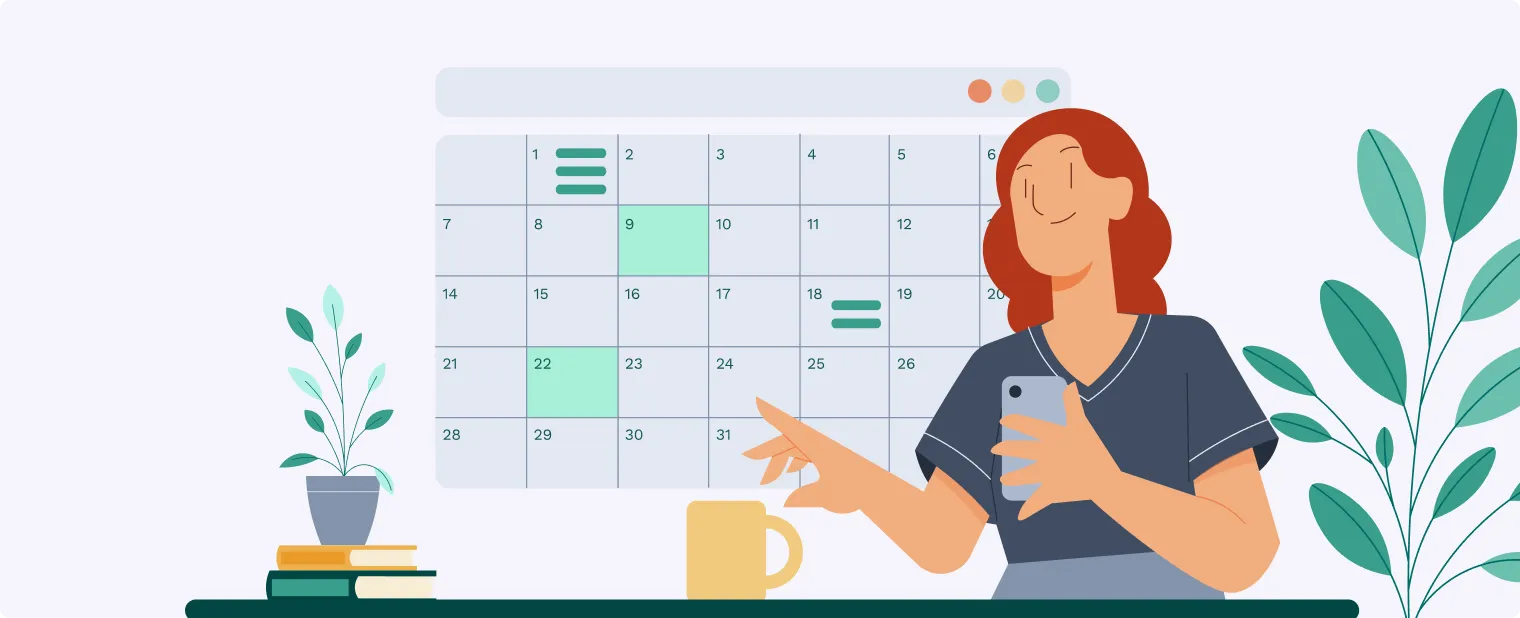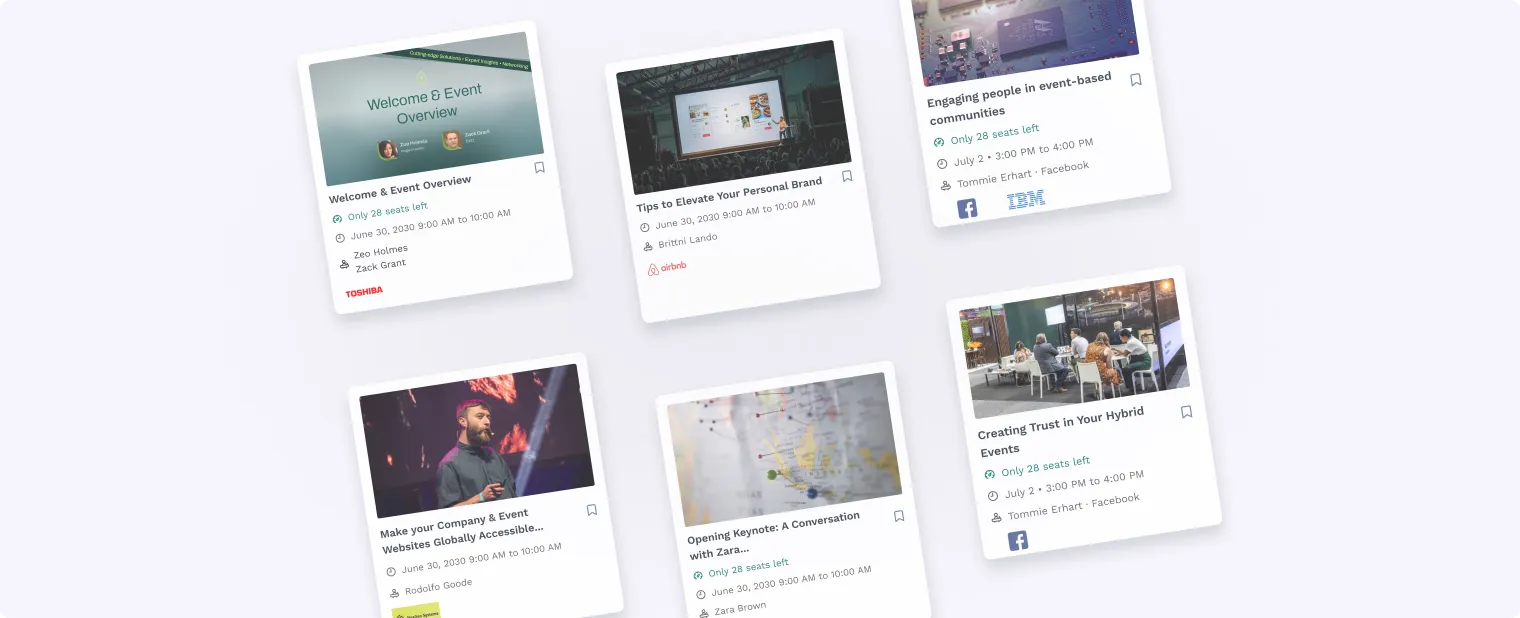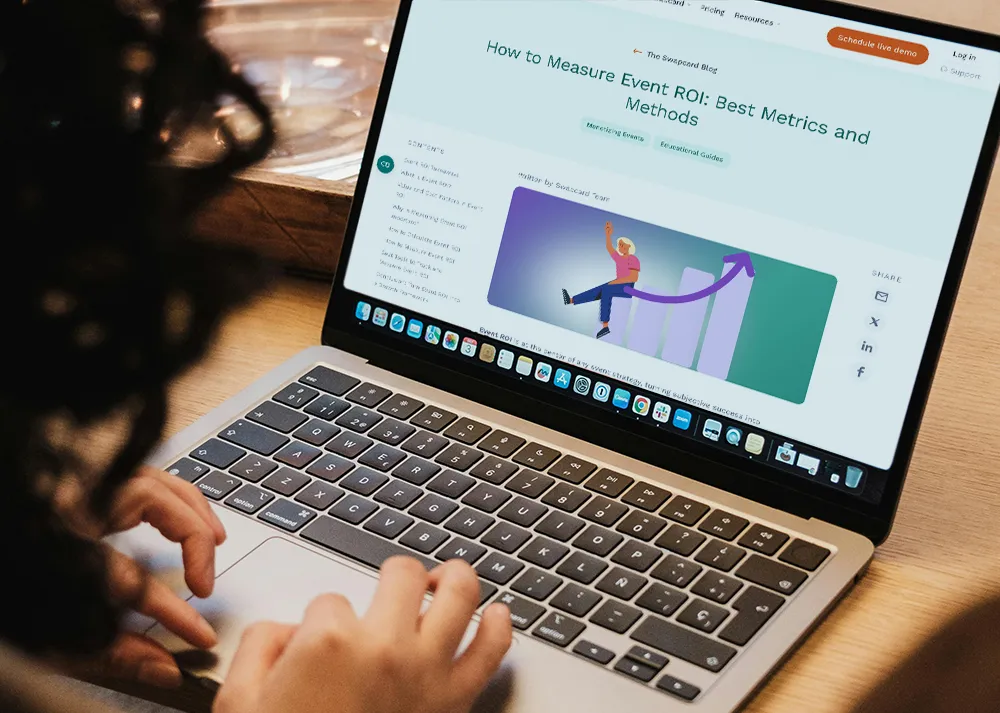How to Create an Effective Event Planning Agenda
When organizing events—whether B2B conferences, trade shows, workshops, or virtual meetups—the planning process requires careful coordination, strategic decisions, and precise execution. A successful event does not simply happen; it results from a thoughtfully planned agenda that prioritizes the right activities at the right time.
This guide provides essential steps to creating an agenda for event planning that keeps your team organized, ensures event success, and creates meaningful experiences for attendees.

Step-by-Step Guide to Your Event Planning Agenda
Define Your Event's Goals and Objectives
The first step to an effective agenda for event planning is clearly defining your event’s goals and objectives. What key outcomes do you aim to achieve? Are you hosting a corporate conference to build brand awareness, a workshop to share specialized knowledge, or a networking event focused on relationship-building?
Understanding your goals upfront allows you to determine the right activities to include in your agenda. Knowing your audience and their expectations further refines your event planning.
Pro Tip:
Tailor your agenda to your event objectives. For example, if networking is your primary goal, include structured networking sessions such as roundtables or breakfasts. If education is the focus, ensure your agenda allows ample Q&A time with speakers.
Set a Budget Aligned with Your Goals
A clearly defined budget is essential. As an event planner, allocate funds across key categories such as venue, technology, catering, and marketing.
Align your spending with your objectives. Prioritize budget areas directly impacting your event goals, such as hiring top-tier speakers, securing high-quality AV equipment, or using targeted marketing efforts. A well-planned budget allows informed decision-making and avoids unexpected expenses.
Pro Tip:
Invest in areas directly related to your event’s objectives. For instance, if your primary goal is audience engagement, prioritize interactive engagement features such as an event mobile app or live polling over elaborate decor.
Choose the Right Date & Time for Maximum Impact
Selecting the right date and time for your event is crucial, especially in a B2B context where your attendees' time is valuable. Consider factors such as your target audience’s availability, competitor events, local holidays, or industry calendars. If your event is in person, also consider logistics such as location, transportation, and potential weather disruptions. Once you finalize the date, communicate it well in advance to all stakeholders.

Pro Tip:
Use surveys to gauge attendee preferences. Mid-week scheduling maximizes attendance, as many professionals are less likely to participate in weekend events.
Select the Right Event Platform
Choose an effective event platform that supports your event's scale and complexity, whether in-person, hybrid, or virtual. Your event platform serves as a central hub, streamlining attendee registration, session management, speaker coordination, and enabling dynamic, real-time agenda updates.
Integrating a comprehensive event platform into your planning ensures your agenda remains structured, organized, and flexible enough to accommodate changes and enhance attendee engagement.
When choosing a physical venue, prioritize accessibility, capacity, and available amenities.
Pro Tip:
Use your event platform to showcase speaker sessions, sponsor highlights, session timings, and interactive floor maps within your agenda, making it easier for attendees to navigate and engage effectively throughout your event.
Design a Seamless Event Agenda
Once your goals, budget, timing, and event platform are set, it’s time to create your event agenda. Your agenda is your roadmap, addressing session scheduling, speaker coordination, attendee registration, and event flow. It must be structured yet adaptable to accommodate last-minute adjustments.
Key Agenda Components:
- Detailed Schedules: Outline times for sessions, speakers, sponsor activities, and networking.
- Balanced Agenda: Strategically arrange keynote speakers, breakout sessions, breaks, and networking moments to maximize attendee engagement.
How to Create a Balanced Agenda:
- Keynote Speakers: Schedule at peak times, usually in the morning. To keep momentum high, leave space for Q&A or interaction afterward.
- Session Breaks: Plan regular breaks to keep attendees refreshed. Avoid back-to-back sessions to prevent burnout.
- Networking Opportunities: Ensure time for attendees to connect, whether through structured activities or informal breakouts.

Pro Tip:
Promote your event agenda early, enabling attendees to plan their participation and build anticipation.
Optimize Your Agenda for Diverse Attendee Needs
Segment your event agenda into themed or role-based tracks (marketing, sales, leadership) to personalize attendee experiences and boost engagement.
Pro Tip:
Use your event platform to facilitate real-time agenda updates, enabling attendees to customize their event experience and manage their preferences effectively.
Include Interactive and Engaging Activities
Interactive sessions keep attendees involved and enhance their overall learning experience. Consider activities such as:
- Live Q&A Sessions: Allocate sufficient time for audience questions after presentations.
- Workshops/Breakouts: Facilitate small group workshops to foster deeper learning and collaboration.
- Gamification/Contests: Engage attendees with interactive competitions or challenges.
Build Your Event Team
Effective event planning requires clearly defined roles for team members, covering marketing, attendee registration, logistics, and speaker coordination. The team directly impacts successful agenda execution.

Pro Tip:
Assign responsibilities and deadlines. Consider external staffing to assist with on-site logistics or other specific functions, ensuring smooth execution.
Craft Event Branding that Resonates with Your Audience
Your event branding should reflect your organization’s values and resonate with your target audience. This branding includes everything from promotional materials to the overall look and feel of the event.

Pro Tip:
Maintain a cohesive visual identity by ensuring consistency across all channels—color schemes, logos, and key messaging. Clearly communicating your event's value proposition to attendees will help increase engagement and registrations.
Engage Speakers Effectively
Speakers are the backbone of your event content. Engaging high-quality speakers elevates your event by adding credibility and attracting attendees. Ensuring speakers are prepared and aligned with your event agenda helps deliver smooth presentations and an engaging attendee experience.
Pro Tip:
Start speaker outreach early and be transparent about expectations. Provide clear guidelines regarding session topics, format, timing, and logistical support (e.g., technical requirements or travel arrangements). Offer speakers tools to interact directly with attendees, including live Q&A sessions, polls, or interactive discussions.
Build Partnerships with Sponsors, Exhibitors & Stakeholders
Sponsors and exhibitors are essential partners who can help fund and elevate your event. They offer financial support while enhancing the attendee experience. Establish mutually beneficial partnerships aligned with your agenda and goals.

Pro Tip:
Outline sponsorship benefits such as branding opportunities, speaking slots, and virtual booths. Maintain open and transparent communication throughout your event planning process to strengthen partnerships.
Promote Your Event Strategically
Effective promotion ensures your event reaches the right audience. Use social media, email campaigns, and targeted advertising to build excitement and drive registrations.
Create a content calendar leading up to your event. Encourage speakers, sponsors, and attendees to amplify your messaging across their networks. Share engaging teasers, speaker highlights, and behind-the-scenes content to generate anticipation.
Test Technical Equipment for Seamless Integration
Reliable technology is critical for all event formats. Conduct comprehensive tests of audiovisual equipment and event platform features prior to your event.
Pro Tip:
Always have backup technical equipment ready to minimize potential disruptions.
Review, Rehearse, and Reassess Your Agenda Regularly
As the event date approaches, continually review and refine your agenda to ensure alignment with your overall objectives.
Prepare for Last-Minute Changes
Even the most meticulously planned events can encounter last-minute changes. Whether it’s a speaker cancellation, a delayed flight, or a technical glitch, being adaptable and prepared for the unexpected is essential.
Ensure your team is ready to handle changes swiftly, and communicate any modifications to attendees in real-time. Having backup plans, such as alternate speakers or contingency schedules, will help you maintain control and minimize disruptions.
Assess Your Event’s Success Post-Event
After your event concludes, gather feedback from attendees, sponsors, and speakers. Evaluate the effectiveness of your agenda, identify strengths, and highlight areas for improvement.
Conclusion: Your Event Agenda Is the Foundation of Your Event
An effective agenda for event planning lays the foundation for a successful event. From defining your goals and setting a budget to selecting the right event platform and managing day-of logistics, a well-structured agenda keeps you organized, focused, and aligned with your objectives.
A successful event goes beyond having a well-planned agenda—it is about providing value to your attendees and ensuring their experience is seamless, purposeful, and engaging.
By following the steps outlined in this guide and continuously refining your agenda, you will be well equipped to plan and host events that meet your goals, maximize attendee satisfaction, and create lasting impact.
Join 12,000 subscribers and unlock industry secrets.
By submitting this form, you agree to receive periodic emails on insightful content related to events and our product, and in accordance with our Privacy Policy. You can, of course, change your preferences or unsubscribe at any time.







.svg)


.svg)
.svg)
.svg)





